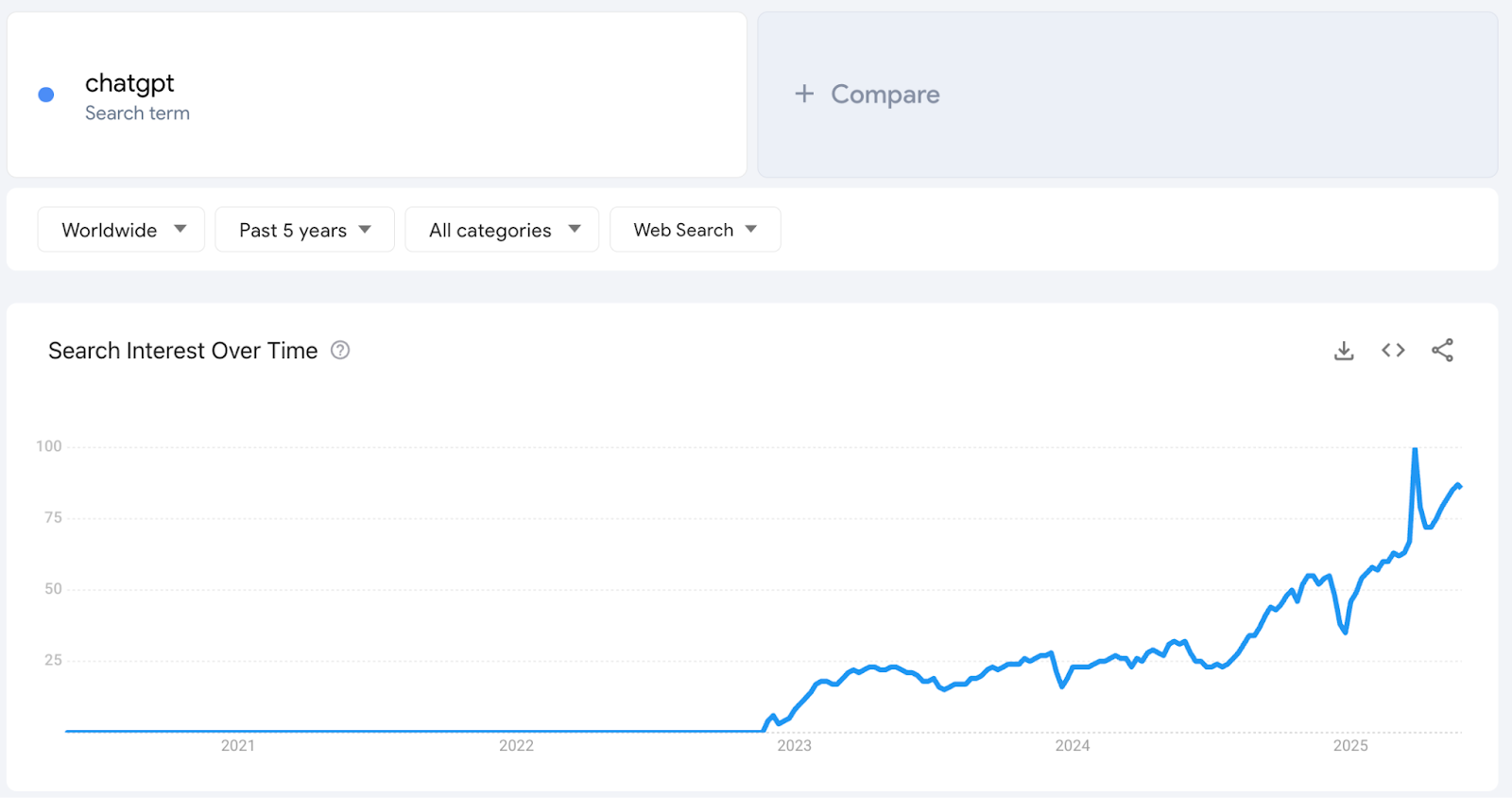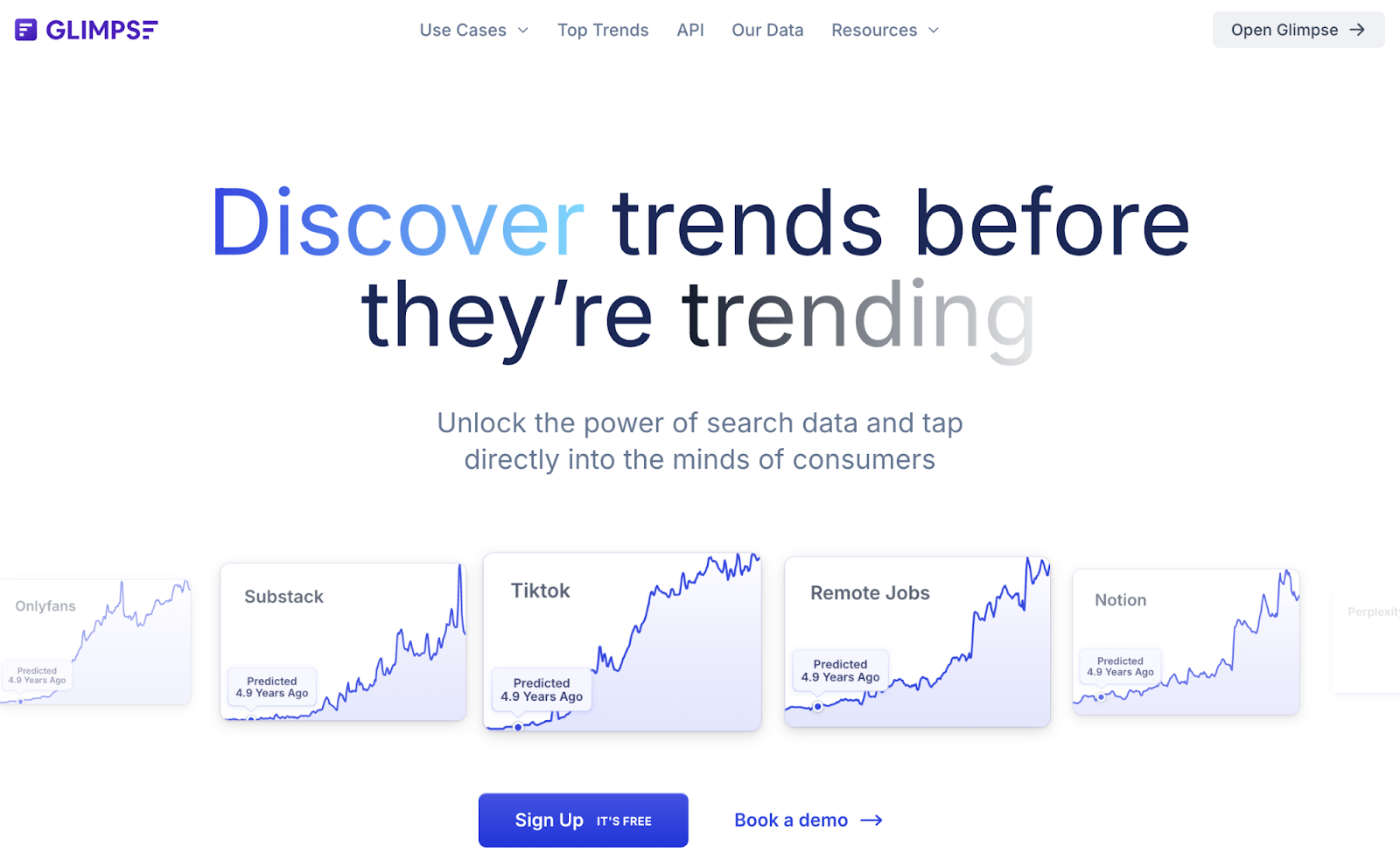
Google Trends is a great tool for market research.
In this article, we will show you how to use Google Trends effectively to execute some essential market research tasks. For a broader framework on trend identification that includes Google Trends as one tool among many, explore our guide on how to identify market trends.
If you're specifically interested in finding business ideas, you might also like our guide on how to use Google Trends to find profitable niches.
Key Takeaways:
Google Trends shows what people search for. It tracks search term popularity over time and across regions, helping you spot rising trends, seasonal patterns, and shifts in interest.
Competitor & market analysis. Compare your brand vs competitors to see who gets more interest, and compare product keywords to gauge relative market demand (which ideas attract more searches).
Find trends and seasonality. Google Trends graphs and related queries reveal emerging topics and recurring demand spikes – e.g. "pumpkin spice latte" peaks each fall, and "home workout equipment" spiked in 2020.
For a deeper dive into the food industry's most promising trends, explore our comprehensive analysis of top 6 food trends in 2025 which examines everything from protein-heavy snacks to sustainable food systems with market data and growth projections.
Gauge consumer interest & sentiment. Search patterns reveal consumer needs and issues. Many “ product problem” searches might flag pain points, while “ product reviews” suggests strong interest. Sudden surges or drops in a term often mirror changes in public sentiment.
Use Rising Trends for extra insight. This tool complements Google Trends by curating fast-growing niches and providing actual 5-year search volume data. Together, they can take your market research to the next level.
Now, let’s explore in detail how to apply Google Trends to some core market research tasks.
1. Competitor Research with Google Trends
Wondering if your competitor is getting more buzz than you? Google Trends can tell you by comparing search interest side by side.
Enter your product or brand name, then click “+ Compare” and add a competitor’s name. Google Trends will show two lines – one for each term as you see in screenshot Nike vs Adidas in last 5 years:
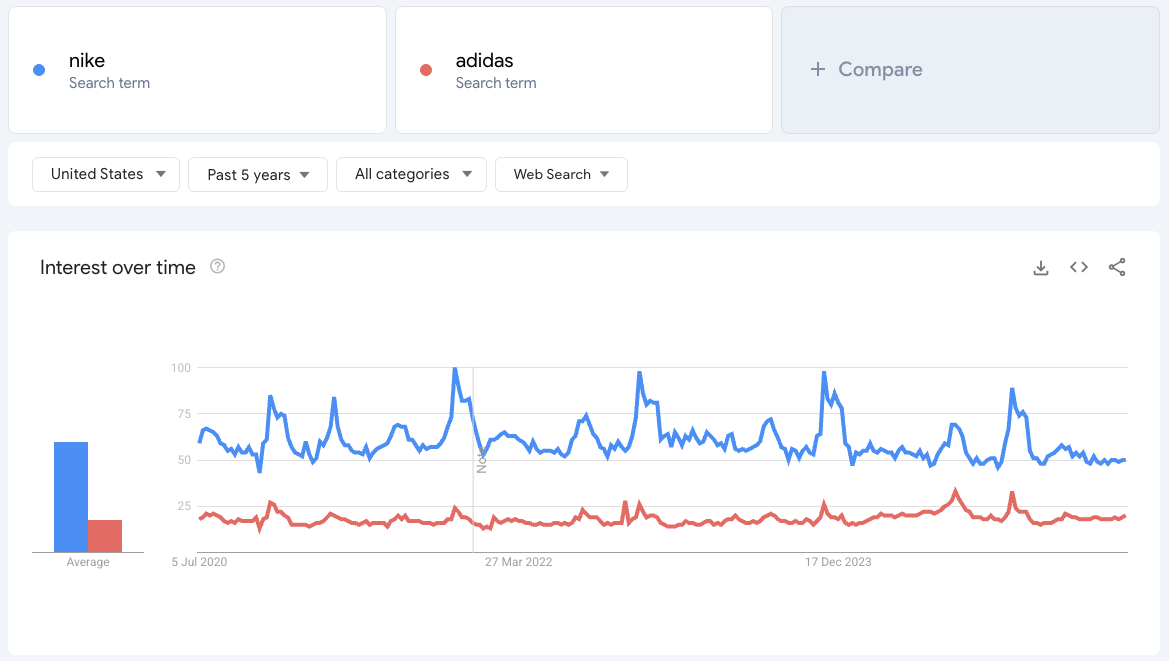
The higher line means more people are searching that term. Spikes on the timeline show when one brand had a surge of interest (often due to a campaign or news). If your competitor’s line is climbing above yours over time, they’re gaining search interest relative to you.
Also note the regional data on the map. You might find your brand leads in certain areas while your rival dominates elsewhere. These insights can guide where you focus marketing or help explain sales differences by region.
Here’s below interest distribution by state for Nike vs Adidas
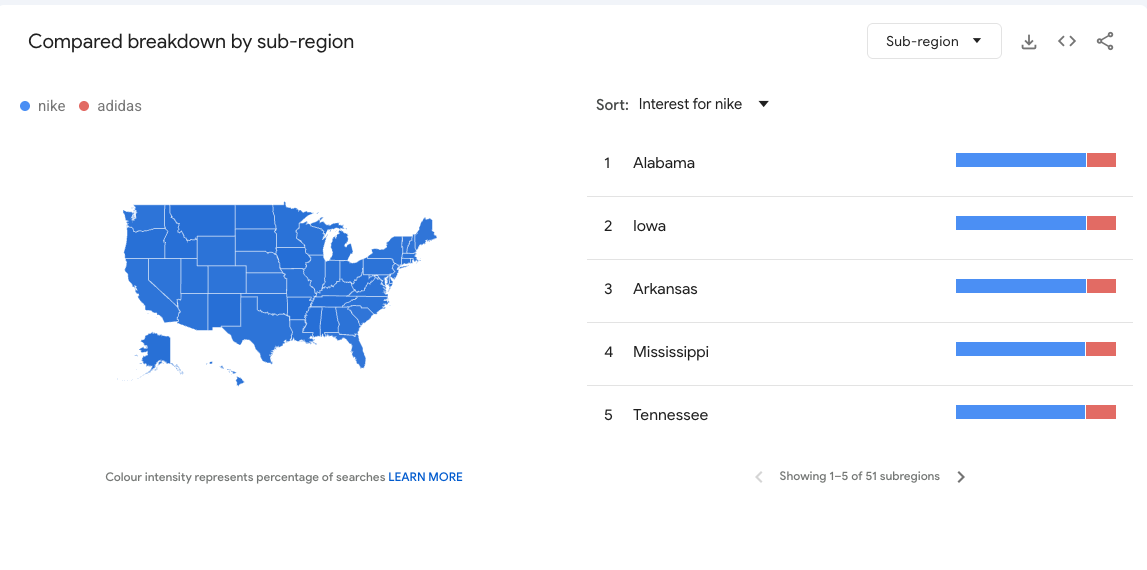
In short, comparing terms on Google Trends gives a quick snapshot of brand popularity. It’s an easy way to gauge how you stack up against the competition and catch any shifts in consumer attention.
2. Gauging Market Demand and Size Using Google Trends
Google Trends can give you a rough sense of market demand by comparing the popularity of related search terms.
For instance, compare “electric cars” vs “hybrid cars” .
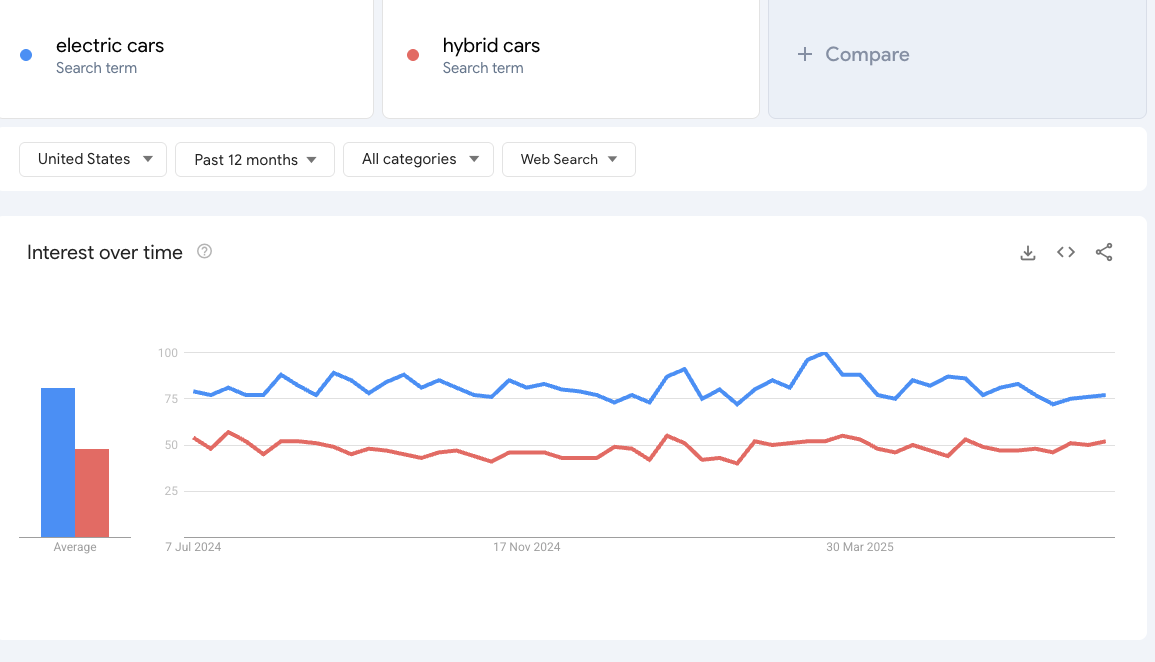
If the “electric cars” line is consistently higher (and rising), that suggests interest (and likely demand) for electric vehicles is greater and growing faster than for hybrids. A higher line indicates more relative search volume, and an upward slope means interest is increasing over time.
You can try this with any related products or topics. It’s a quick way to see which one has the edge in public interest.
Remember, Google Trends shows relative interest (not exact search counts), but it’s excellent for comparisons.
To get absolute search volume, you need to use a tool like Rising Trends or Ahrefs that will show you an estimate of how many people are search for the keyword/topic.
Here’s for example the graph for search volume for the keyword “tinted sunscreen”
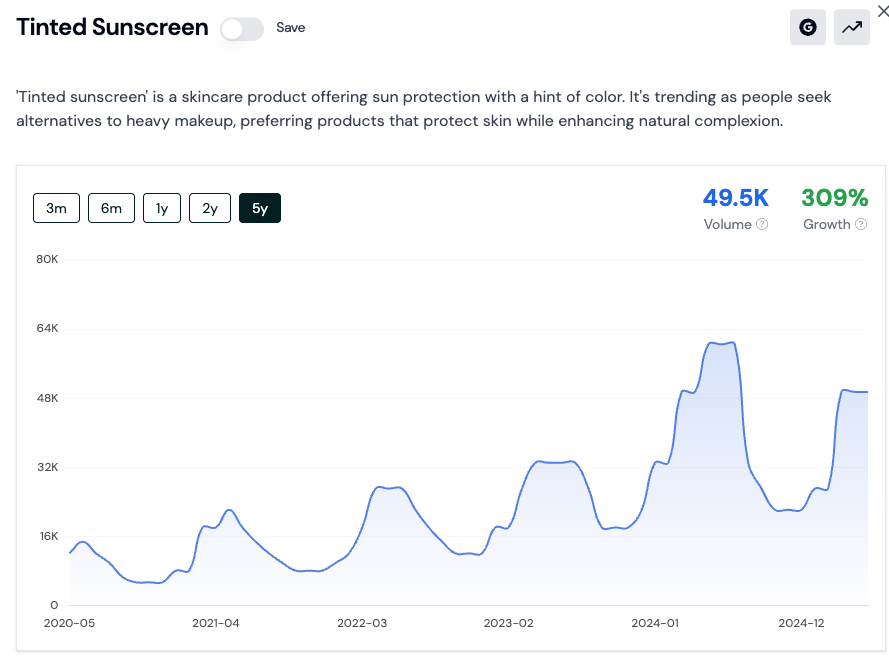
Use a longer time range (say, 5 years) to catch overall trajectories: is interest trending up, steady, or down? This helps confirm if a market is expanding or if it might be losing steam.
3. How To Use Google Trends to Spot Emerging Trends and Seasonality
Google Trends is your radar for spotting new trends early and understanding seasonal patterns.
To catch emerging trends , look at the Related queries – Rising for your search term.
If you see a query marked “Breakout” or with a huge jump, that means it recently surged in popularity – a strong hint of a new trend.
For example, if “tinted sunscreen” shows up as a breakout query under “sunscreen,” that suggests a new hot topic or product in skincare.
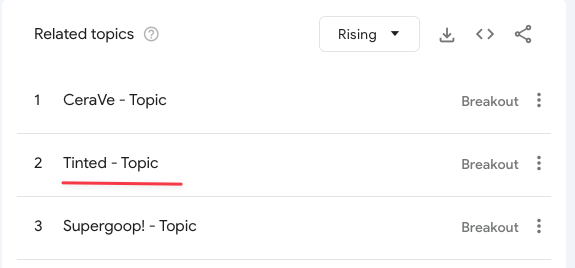
These rising queries show what’s gaining traction around your topic, so you can investigate or capitalize on it.
For seasonality , set your time range to multiple years.
Many searches have regular annual peaks.
For instance, “chocolate gifts” spikes every February (Valentine’s Day), and “grill recipes” spike each summer.
Recognizing these patterns tells you when interest naturally peaks, so you can time your campaigns or stock accordingly. If a spike only happened once and never again, it was likely a fad or one-off event, not a seasonal cycle.
In short, Google Trends helps you anticipate both the when and what of consumer interest – when the waves of demand hit and what new waves might be forming.
As you can see, trying to keep up with these breakout trends can be time consuming since you need to always check Google Trends.
That’s why we built Rising Trends.
We check Google Trends as well as other sources every week to spot these emerging trends and consolidate everything under one dashboard that have filters and sorting options to help you find exactly what you’re looking for in a matter of minutes.
Sign up today for free to find breakout trends in your industry
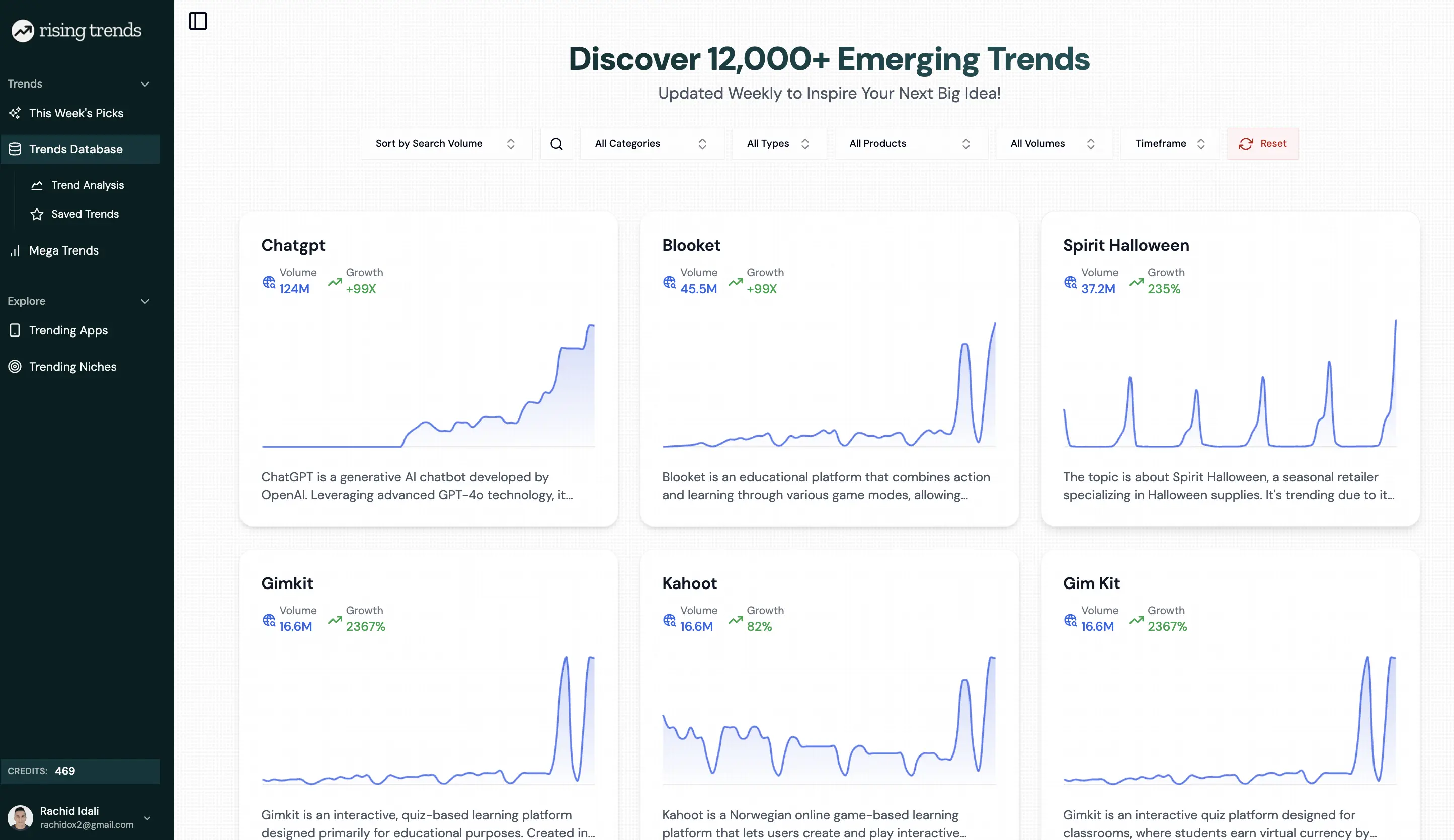
4. Understanding Consumer Sentiment using Google Trends
Google Trends doesn’t explicitly label sentiment, but it offers clues through the language of searches.
If people frequently search your brand or product with words like “problem,” “won’t turn on,” “complaint,” or “scam,” that signals frustration or negative experiences.
For example, a rise in “ Product X not working” means many users are having an issue – something you’d likely want to fix pronto.
On the flip side, searches like “ Product X best features” or “ Brand X reviews” indicate interest and engagement (a positive sign).
Keep an eye on changes over time. If a negative query suddenly spikes, a bad review or news incident might be behind it.
If “ Brand X alternatives” starts climbing, customers could be thinking of switching (potential dissatisfaction).
For example, we see below the search interest of keyword “soda alternative” is climbing since people are now searching more for healthier options.
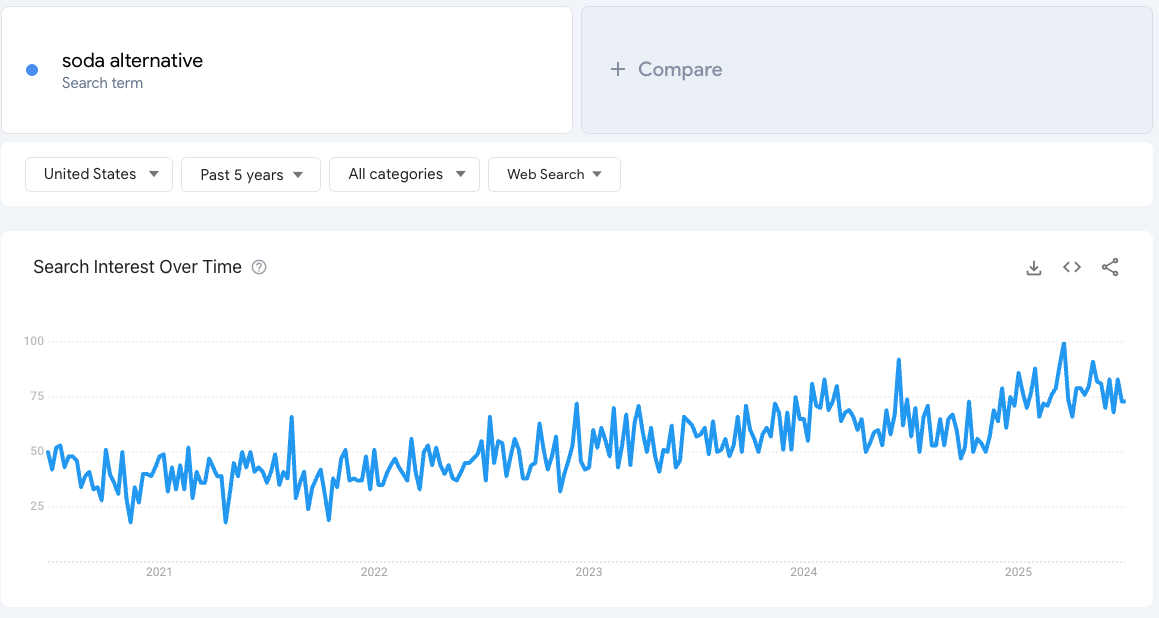
Similarly, a big spike in your brand’s searches after a notable event can hint at sentiment: a surge tied to a scandal or recall is not good news, whereas a spike after a great product launch or shout-out can be very good news.
By watching how people search for your brand (and what they're asking), you get a window into their mindset. It's not as direct as a survey, but it's genuine, unfiltered feedback from the questions people are asking Google.
Companies often combine this with other research to gauge sentiment, but even on its own, it's a handy early warning system for issues or a pat on the back for a job well done. For example, tracking design preferences and home improvement trends can reveal emerging opportunities - see our analysis of top home improvement and design trends for insights into this growing market.
Going Further with Rising Trends
Google Trends is powerful, but it has limits – it only shows what you ask for, and it gives data in relative terms.
Rising Trends is a tool that complements Google Trends by surfacing trending topics for you and providing more concrete data.
Rising Trends basically helps you discover new trending niches and gives you the numbers behind them.
It has so far a curated list of over 10,000 emerging topics and keywords, so you can find promising trends you might not have thought to search. It also shows exact search volumes and growth for those trends over the past 5 years, something Google Trends doesn’t do.
Plus, Rising Trends pulls in data from multiple sources (Google, TikTok, Amazon, etc.) to catch trends even if they’re just starting outside of Google.
In practice, using both tools together gives you a fuller picture. You might use Rising Trends to discover a hot new topic, then use Google Trends to compare that topic over time or against other terms.
Or if Google Trends shows something intriguing, you check Rising Trends to get the actual numbers and ensure it’s part of a broader uptrend.
By combining Google Trends’ ability to explore any term with Rising Trends’ talent for finding and quantifying trends, you’ll have a powerful one-two punch for market research.
For even more options, check out our guide on the best Google Trends alternatives.
FAQs About Using Google Trends for Market Research
Q1: How can I use Google Trends to analyze competitors?
Type your competitor’s name into Google Trends and use Compare to add your own (or another competitor’s) name.
You’ll get a chart showing relative search interest for both terms over time. This lets you see who is getting searched more and when each has spikes.
For instance, if Competitor X’s line jumps in March, they likely launched a campaign or product then.
Also check the map to see which regions each is popular in. In short, Google Trends gives you a quick gauge of your brand’s interest versus your competitor’s, highlighting any shifts in momentum.
Q2: How do I find new or seasonal trends with Google Trends?
For new trends , enter a broad keyword and look at the Rising related queries . Any query labeled “Breakout” (or with a big percentage increase) is a sign of an emerging topic – lots of new interest.
For seasonal trends , set the timeframe to 5 years or more for your term. Look for repeating spikes at the same time each year (for example, searches for “grills” peaking every summer).
Those patterns show a seasonal cycle. Using both approaches, you can spot up-and-coming interests and also anticipate high and low seasons in your market.
Q3: What does Rising Trends offer that Google Trends doesn’t, and should I use both?
Google Trends is great for examining specific search terms in detail, but it doesn’t suggest new trends and only shows relative interest.
Rising Trends fills those gaps. It uncovers rising keywords and niches you might not know to search (with a curated trends database), and it provides their exact search volumes and growth rates.
It also uses multiple sources (not just Google data) to catch trends early.
Using both together is highly recommended: use Rising Trends to discover and validate new opportunities, then use Google Trends to drill down, compare, and time those opportunities.
Together, they give you a more complete and actionable view of market trends.
Want to see this approach in action? Explore our data-driven trend reports that combine Google search data with cross-platform signals: haircare trends 2026 (50+ trends from rice water to scalp treatments), supplement trends 2026 (the booming market for magnesium, adaptogens, and gut health), and fitness trends 2026 (recovery tech, electrolytes, and functional training).


